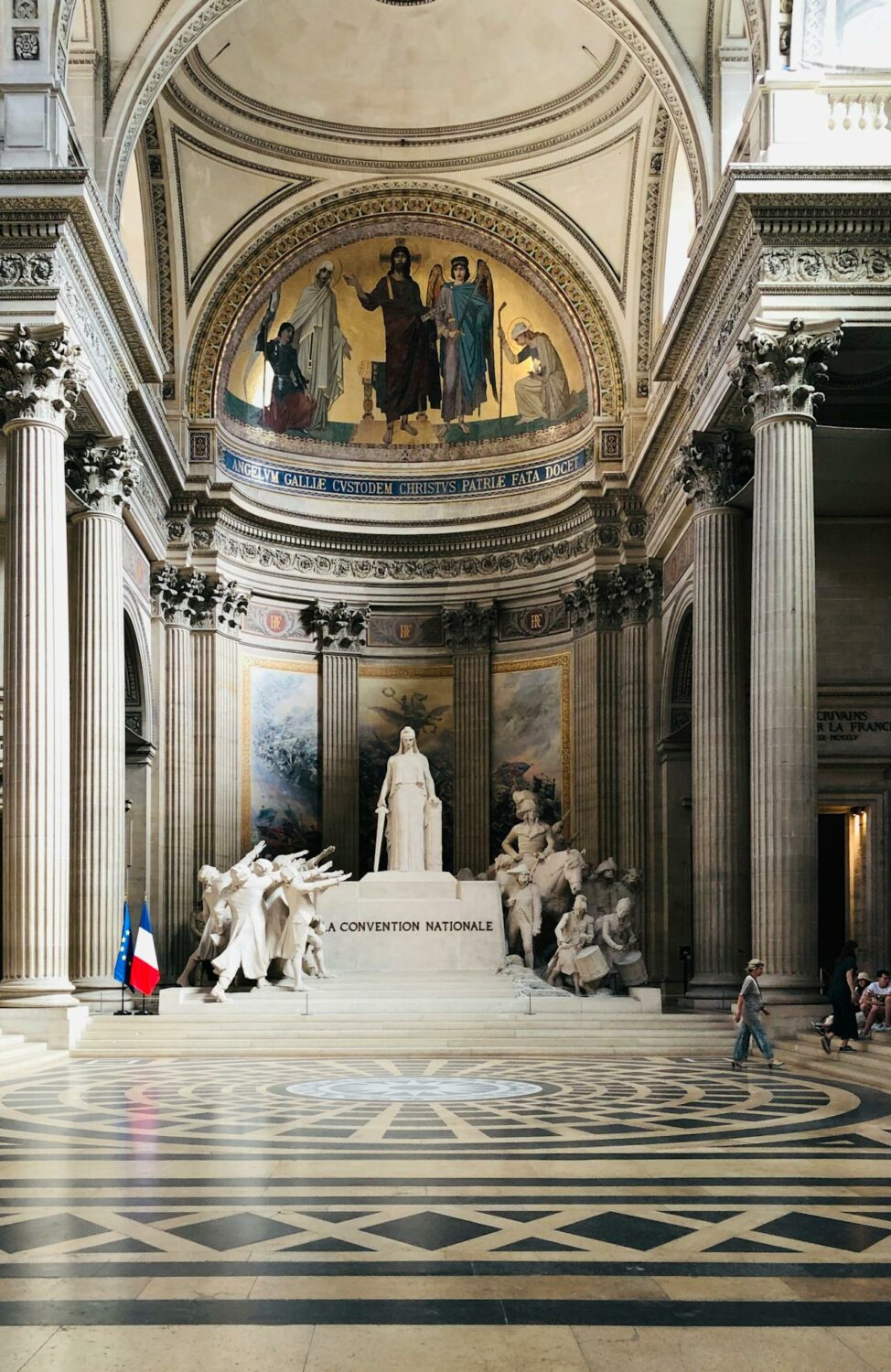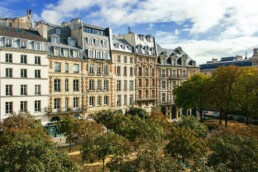In the beating heart of the Left Bank of Paris, the Pantheon stands as a majestic sentinel, dominating the Latin Quarter with its imposing dome. This monument, a harmonious blend of neoclassical architecture and republican grandeur, is much more than a mere building. It is a sanctuary of national memory, a place where the greatest minds of France rest.
The history of the Pantheon begins in 1758, under the reign of Louis XV. Wishing to thank heaven for his recovery from a serious illness, the king ordered the construction of a church dedicated to Saint Genevieve, the patron saint of Paris. Architect Jacques-Germain Soufflot was chosen to undertake this colossal enterprise. His ambition: to create a building combining Gothic lightness with classical grandeur. Work began in 1764 and was not completed until 1790, after Soufflot’s death.
I recall the stories my grandfather, passionate about the history of Paris, would tell, evoking the technical and artistic challenges of this titanic project. The Corinthian columns, the sculpted pediment, the dome inspired by the Pantheon of Rome—each element testifies to Soufflot’s architectural genius and his desire to create a monument worthy of the gods.
With the French Revolution, the fate of the Pantheon changed radically. In 1791, the National Assembly decided to transform the church into a secular temple, dedicated to the “great men” of the nation. Thus, the Pantheon became the mausoleum of republican heroes, a place of memory where the illustrious figures of French history were celebrated. The first to be interred there were Voltaire and Rousseau, symbols of the Enlightenment and reason.
When I walk through the vast galleries of the Pantheon, a gentle melancholy washes over me. The names engraved in the stone, the marble busts, the tricolored flags—everything here breathes grandeur and solemnity. Each tomb, each inscription, tells a story, that of the men and women who shaped France.

Among the emblematic figures resting under the dome of the Pantheon are Victor Hugo, Émile Zola, Jean Moulin, and Simone Veil, names that resonate like echoes of France’s literary, political, and moral grandeur. Observing the visitors, who come from all walks of life to pay homage to these illustrious departed, I cannot help but think of the strength of the legacy they have left us.
The crypt of the Pantheon, with its dark and silent vaults, is a place conducive to meditation. The aligned sarcophagi, the funerary chapels, create an atmosphere of contemplation and respect. It is here that one fully realizes the fragility of life and the permanence of memory.
Thus, the Pantheon is not merely a historical monument. It is a symbol of continuity between past and present, a place where the history of France can be seen and felt. Each visit is a plunge into the depths of national memory, an invitation to reflect on our own heritage and the path trodden by those who preceded us.
Leaving the Pantheon, heart imbued with a gentle melancholy, one carries away a fragment of that grandeur, a part of that timeless light. The Pantheon, through its stones and memories, reminds us of the beauty and richness of our history, and invites us to continue, in our turn, this quest for greatness and wisdom.

Lire également :
5 November 2024
Baron Haussmann: Architect of Parisian Metamorphosis
5 November 2024
The History of Place Dauphine: A Parisian Evocation
5 November 2024






